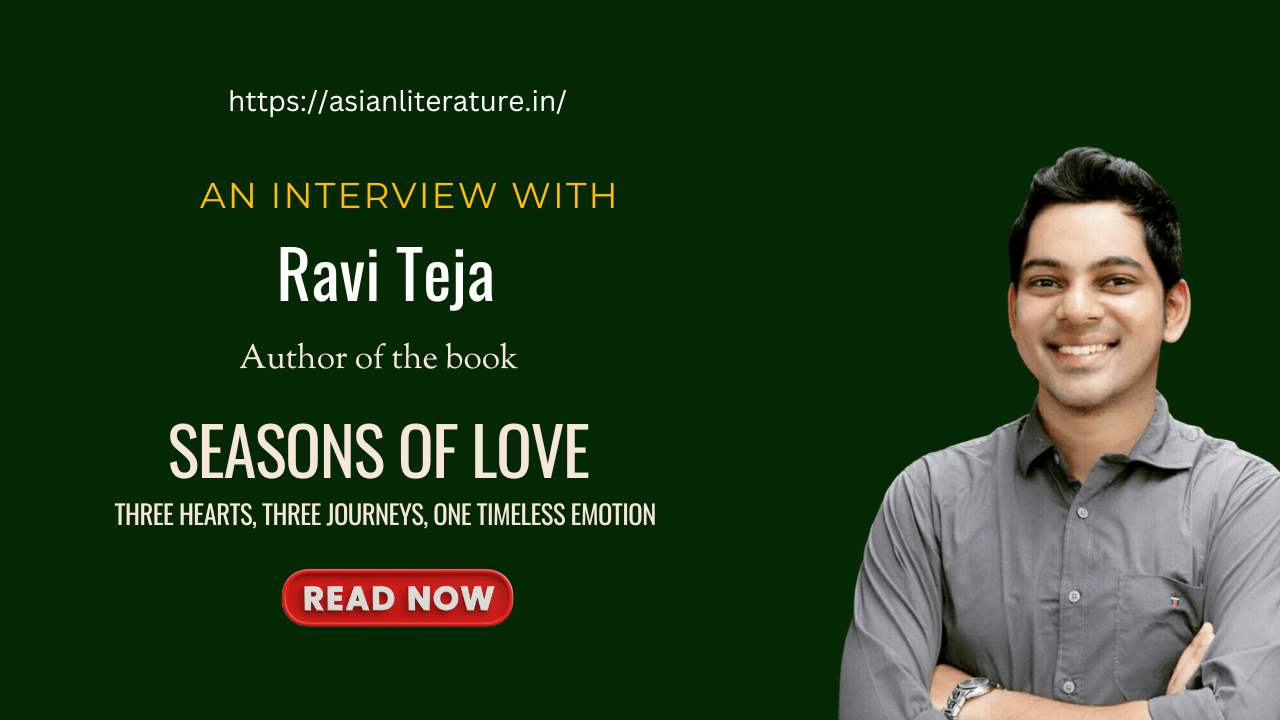
About the author: Ravi Teja is a writer of captivating fantasy, science fiction, romance novels and short stories that whisk readers away to enchanting realms and starry galaxies, all while exploring the tender bonds of love. With a keen eye for detail honed by years as an orthodontist, Ravi Teja crafts intricate worlds and compelling characters that resonate with readers of all ages.
Despite a fulfilling career in the precise science of orthodontics, Ravi’s heart has always been drawn to the boundless creativity of English literature. From childhood tales of daring knights and faraway planets to the sweeping epics of love and adventure, these stories have fuelled a lifelong passion for the written word.
Now, Ravi Teja brings that passion to life, blending thrilling speculative fiction with the emotional depth of romance, creating stories that linger long after the final page. When not shaping smiles or crafting tales of otherworldly love, Ravi can be found exploring local bookstores, hiking in nature or watching anime.
Q1: What inspired you to write Seasons of Love?
Answer: Seasons of Love was born out of quiet moments — the kind of moments where emotion lingers longer than words. I’ve always been fascinated by how love changes with time, how it can begin in laughter, deepen in silence, and sometimes survive only as a memory.
As an orthodontist, I meet so many people every day, and behind every smile there’s a story — of connection, of loss, of hope. Over the years, I began to see that love, in all its forms, has seasons: the freshness of spring, the warmth of summer, the melancholy of autumn. Each story in this anthology grew from that idea — that love doesn’t end; it transforms.
Q2: How did the idea of connecting love with the changing seasons come to you?
Answer: I began thinking of how every relationship I’d ever witnessed or heard about seemed to move in phases: the first rush of spring when everything feels new, the fullness and intensity of summer, and the quiet ache of autumn when things begin to change. It felt like nature’s own metaphor for the heart.
So, instead of writing one love story, I wanted to write three, each mirroring a different season of emotion — the innocence of falling in love, the warmth of holding on, and the bittersweet grace of letting go. Once that idea settled, it just wouldn’t leave. Every scene, every line, found its rhythm in that pattern of change.
Q3: Is this book drawn from personal experiences, observations, or imagination?
Answer: I’d say Seasons of Love is a blend of all three — a reflection of memory, observation, and imagination woven together.
There are moments in the book that come from real feelings — the quiet longing, the hesitation before saying “I love you,” the ache of realizing time has changed something you thought was forever. Those emotions are universal; I’ve seen them in people around me, in friends, in patients, and yes, in my own life too.
But storytelling gives those emotions shape. Imagination turns a fleeting feeling into a full story — gives it a heartbeat, a name, a city. Seasons of Love isn’t a memoir; it’s more like a mirror held up to the many faces of love I’ve encountered — some lived, some watched, some only dreamed.
Q4: When did you first realize story writing was your way of expressing emotions?
Answer: It happened long before I ever thought of myself as a writer. I was still in school, trying to make sense of feelings that didn’t quite fit into conversation. Writing became my quiet space — a place where emotions didn’t need permission or explanation.
While others found relief in talking, I found it in writing — in how a few carefully chosen words could hold an entire world of meaning. Over time, writing became less of a hobby and more of a language I trusted. It allowed me to say things I couldn’t say aloud — about love, loss, longing, and the silences in between.
Even today, every story I write begins as a paragraph in my head — an image, a line, a heartbeat. Seasons of Love was no different. It started as paragraph about the changing seasons of the heart… and eventually grew into stories that carried those verses within them.
Q5: How does your own life journey influence the emotions and imagery in your stories?
Answer: My writing has always been a reflection of the life I’ve lived — not in events, but in emotions. Every stage of my journey has left its own imprint on my words. The discipline of medicine taught me patience and observation; the rhythm of daily life taught me to notice the beauty in small, ordinary moments.
Over the years, I’ve realized that emotions don’t come to us in grand gestures — they hide in the details: the way someone pauses before speaking, the way silence fills a room, the way memory lingers in the smell of rain. Those are the images that find their way into my stories.
My life hasn’t been without its share of heartbreaks, doubts, and quiet triumphs. Each of those moments has shaped how I write about love — not as perfection, but as something human, imperfect, and deeply enduring.
Q6: The title Seasons of Love is both poetic and symbolic. What does it represent to you?
Answer: To me, Seasons of Love is more than just a title — it’s a metaphor for how love evolves, changes, and endures across time.
Just like nature, love has its own rhythm. There’s the freshness of spring, when everything feels new and full of promise; the warmth of summer, when love deepens and glows; and the melancholy of autumn, when it begins to fade or transform into memory.
Each story in the anthology mirrors one of those emotional seasons — the innocence of discovery, the ache of devotion, and the quiet grace of remembering.
The title reminds me that love, like the world around us, is cyclical. It may vanish for a while, but it always finds a way to return — in another form, in another time, through another heart.
Q7: Each story seems to capture a unique shade of love—joy, pain, nostalgia, hope. How did you balance these emotions throughout the book?
Answer: For me, love has never been a single emotion — it’s a spectrum, constantly shifting between light and darkness. While writing Seasons of Love, I wanted each story to feel like a step through that spectrum: from the brightness of first affection to the ache of distance, and finally to the quiet acceptance that follows.
I didn’t try to separate joy from pain or hope from nostalgia — I let them coexist, just as they do in real life. Every relationship carries traces of all these feelings; one moment can hold laughter and heartbreak side by side. My goal was to let the reader feel the transitions — to move gently from warmth to melancholy without ever losing the thread of tenderness that binds them all.
In a way, I think that’s what makes love beautiful — it doesn’t cancel out the difficult emotions; it carries them. And by the end of the book, I wanted readers to realize that even when love changes its form, it still leaves behind light — sometimes in memory, sometimes in hope.
Q8: Did you intend for readers to experience the stories in a particular order, like a journey through the seasons?
Answer: Yes — absolutely. Seasons of Love was always meant to be read as a journey, not just a collection. The order of the stories mirrors the natural rhythm of love itself — how it begins, deepens, and transforms.
The first story, Love, By Accident, is spring — light, unexpected, filled with newness and possibility. Love, After Her is summer — warmer, more intense, where love is tested by time and longing. And Love, Forgotten is autumn — reflective, nostalgic, a season of acceptance and remembrance.
I wanted readers to move through those emotional shifts as though they were living them — to feel the freshness of beginnings, the fullness of connection, and the quiet ache of letting go.
By the end, the circle closes not in despair, but in hope — the understanding that every season of love, even the painful ones, leaves behind something beautiful.
Q9: Which story from the collection is closest to your heart, and why?
Answer: Each story in Seasons of Love carries a piece of me, but if I had to choose one, it would be Love, After Her. There’s something about that quiet ache — the waiting, the half-healed hope — that has always felt deeply personal.
That story, for me, captures the essence of what love often becomes in real life: not the grand gestures, but the small, persistent presence of someone who never truly leaves your heart. Shashank’s stillness, his gentleness, and the way he carries his love with dignity — those qualities speak to the part of me that believes love can remain pure even in its absence.
Love, After Her was also the hardest to write. It demanded honesty — the kind that comes from looking inward. There’s a fine line between remembering and moving on, and that story walks it. Writing it felt like revisiting a familiar wound, but doing so with gratitude instead of regret.
It reminds me that even when love doesn’t last forever, it still leaves behind something meaningful — the warmth of having felt it at all.
Q10: What message or feeling do you want readers to carry after finishing your book?
Answer: More than anything, I want readers to close the book with a sense of quiet warmth — that gentle ache that comes from remembering something beautiful.
Seasons of Love isn’t just about romance; it’s about the endurance of feeling. I want readers to see that love, in all its forms — joyful, painful, fleeting, or forgotten — always leaves something behind. It shapes us, softens us, and teaches us to feel deeply even when we’re afraid to.
If there’s one truth, I hope they carry, it’s that love never truly disappears. It simply changes its season. Sometimes it becomes memory, sometimes friendship, sometimes silence — but it’s still there, somewhere, transforming us in ways we might not even realize.
And when readers reach the final page, I want them to smile — not because everything ended perfectly, but because they recognize themselves in these stories and know that their own season of love, whatever it may be, still has meaning and that there is always hope.

